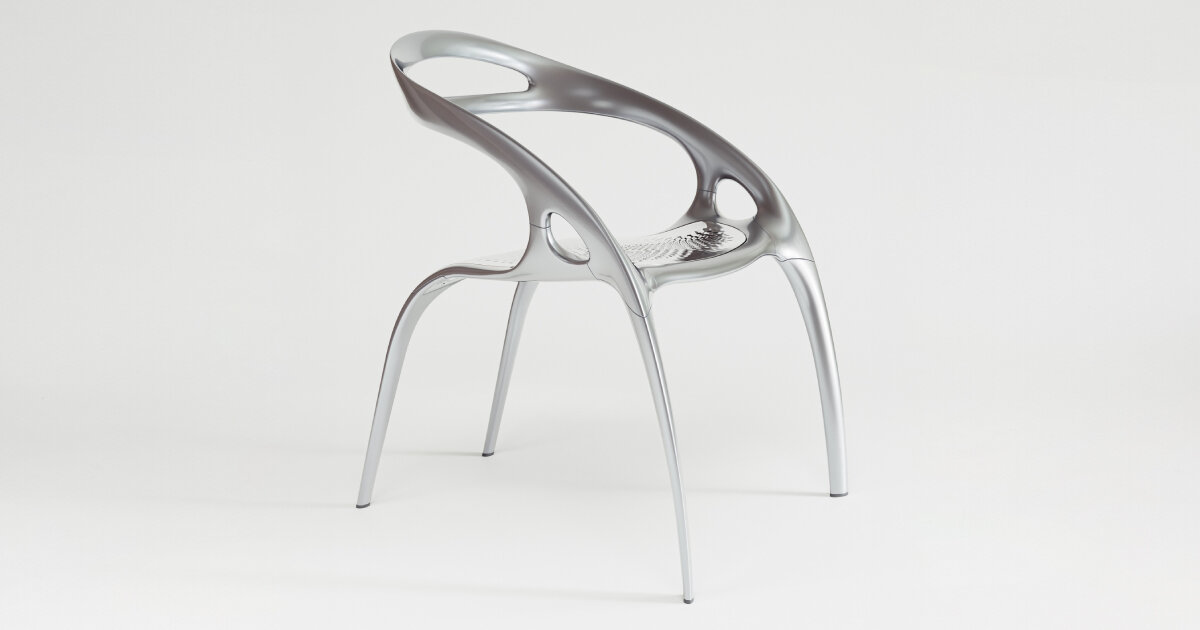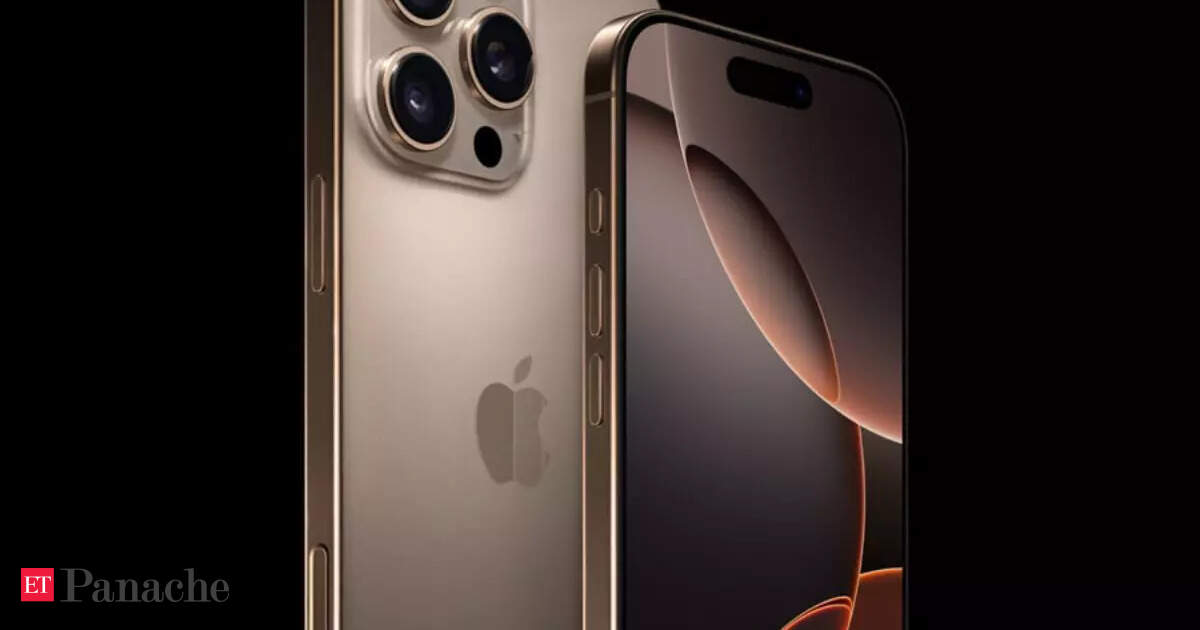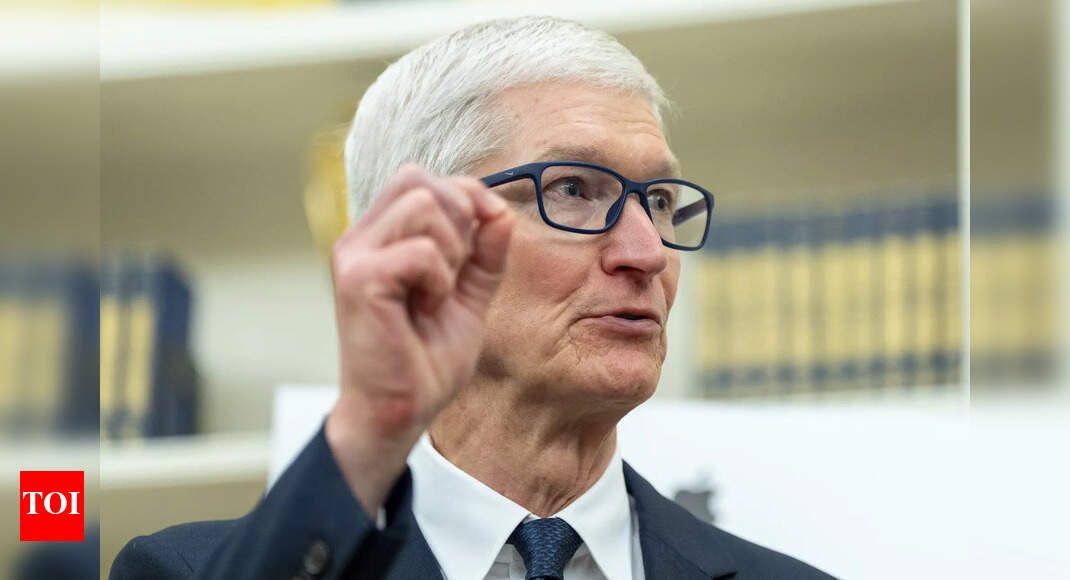Ross Lovegrove shapes PolarisGo chair using space-mission data
Ross Lovegrove shapes his PolarisGo chair using the data from the Polaris Dawn space mission and injected magnesium. Made of aerospace-grade aluminum alloy, the industrial designer draws directly from the shock wave data of the mission launch for the design of the seat, made in collaboration with CreativeWorkStudios. In an interview with designboom, Ross Lovegrove says he has access to the Polaris Dawn flight data and uses it as follows. ‘I have taken this data and translated it into a frequency that is passed through the frame of the GO Chair creating four distinct polarized focus points in each corner of the seat,’ the industrial designer tells us.
He’s talking about the main surface of the chair, which has ripples resembling the shockwaves from the space-mission data. ‘These four points then radiate waves that are arrested three dimensionally as they converge in the center of the seat pan and translated into a pressed metal alloy which becomes strengthened by the tessellated surface,’ Ross Lovegrove explains. These four-sided ripples converge in the middle. They also pay homage to the four astronauts in the Polaris Dawn space mission. ‘We have laser etched their names in each of the corners, creating an additional connection with history and space memorabilia,’ the designer adds.
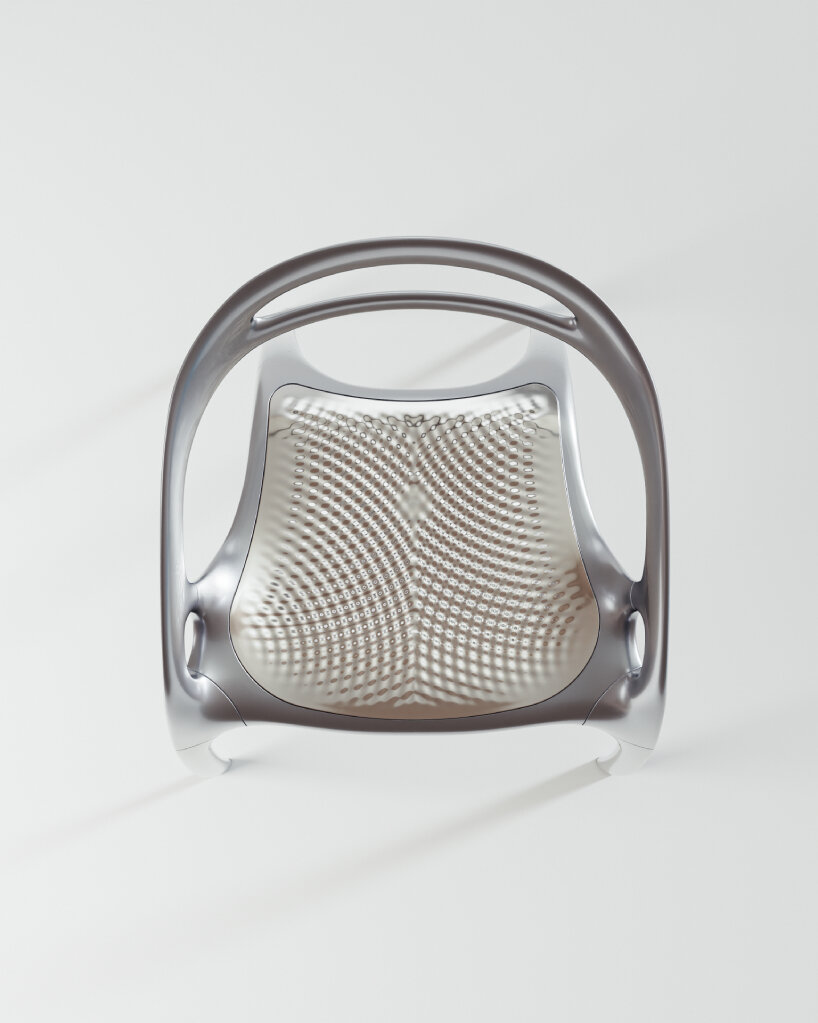
all images courtesy of Ross Lovegrove and CreativeWorkStudios
Injected magnesium to make a lightweight seat
For the PolarisGo Chair, made in collaboration with the creative agency CreativeWorkStudios, Ross Lovegrove uses his iconic Bernhardt Go Chair as the base, which was launched in New York in 2001. ‘It was originally created in aluminum, but I felt it was too heavy and wanted to retain the physical anatomical mass of the chair’s lines,’ the industrial designer tells designboom. To make it lighter, he taps Audi’s advanced engineering unit in Ingolstadt, which pioneers magnesium to lighten car wheels. ‘The entire development program is then undertaken in Nurnberg. It results in a chair with a 30 percent reduction in its specific weight,’ says Ross Lovegrove.
He injects magnesium into the aerospace-grade aluminum alloy to preserve the sculptural design of the chair made from space-mission data. The resulting seat is lightweight and malleable enough to take on a desired shape. There are only 210 units available for the model, each of which has injected magnesium. They also slightly differ from each other, depending on the data used from the Polaris Dawn space mission. So far, the chair is part of the permanent collections of the Centre Pompidou in Paris, the Philadelphia Museum of Art’s collection, and the Kirkland Museum of Fine & Decorative Art. The seat has also shown up at the Design Museum in London and the Guggenheim Museum in New York, with an established status as a significant piece in the history of modern design.
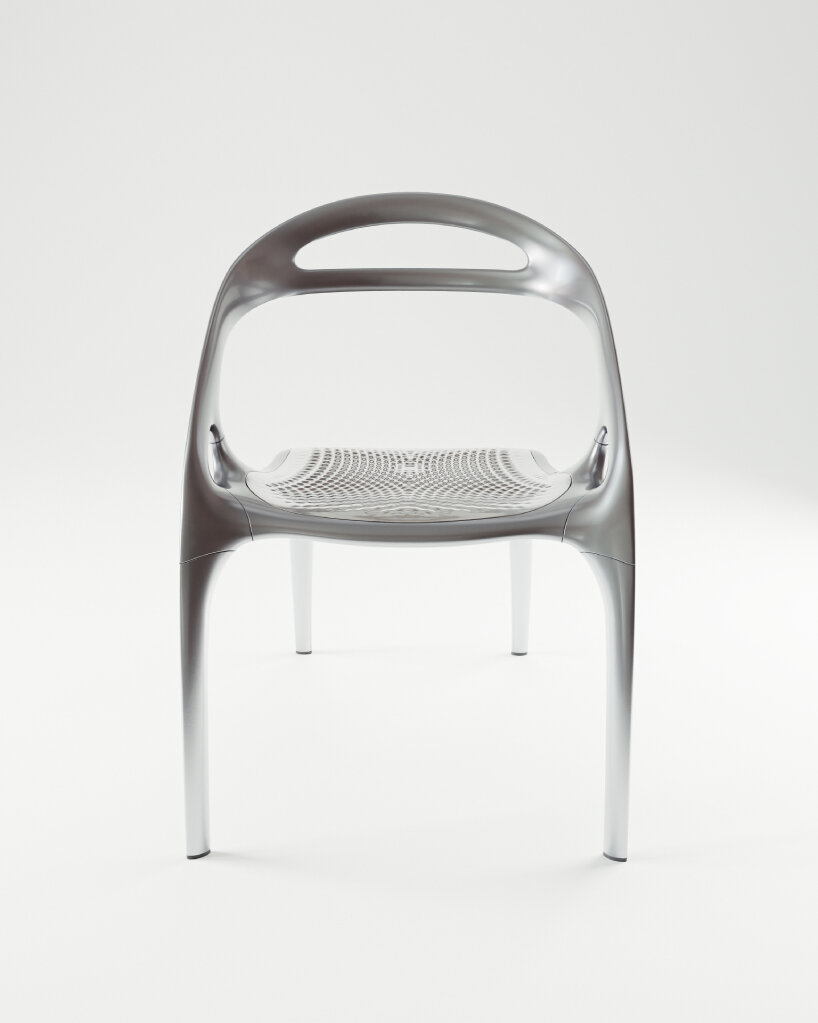
Ross Lovegrove shapes his PolarisGo chair using the data from the Polaris Dawn space mission
Chair featured in sci-fi movies like Passengers
Design-wise, Ross Lovegrove leaves the huge part of the rear open. First, it allows for ventilation. Then, it mimics the shape of the windows around the aircraft used for the Polaris Dawn space mission. The industrial designer also creates a suspended look for the curved back of the seat, resulting in a singular look. He admits to us that using aerospace-grade aluminum alloy and injected magnesium can be challenging. The results, however, can be highly rewarding, too. ‘Space and aerospace,to my knowledge, do not employ biomaterials. Except possibly for selective interior parts,’ he answers when asked whether he has experimented with alternative components for the chair.
The rear legs of the chair made from space-mission data slope down. The seat curves and slopes throughout is reminiscent of the body forms of aliens in sci-fi movies. In fact, Ross Lovegrove shares with us that sci-fi movies like Passengers (2016) have featured the chair. These flowing designs also refer to some of the parts that make up the aircraft used in the 2024 flight. They also reflect the design principles of their maker, who tells us he sees himself as a sculptor of technology. ‘The lines of the products I design embody a sense of life force and motion,’ says Ross Lovegrove. CreativeWorkStudios says that a percentage of the proceeds from each Ross Lovegrove PolarisGo Chair goes to the St. Jude Children’s Research Hospital for cancer and disease research.
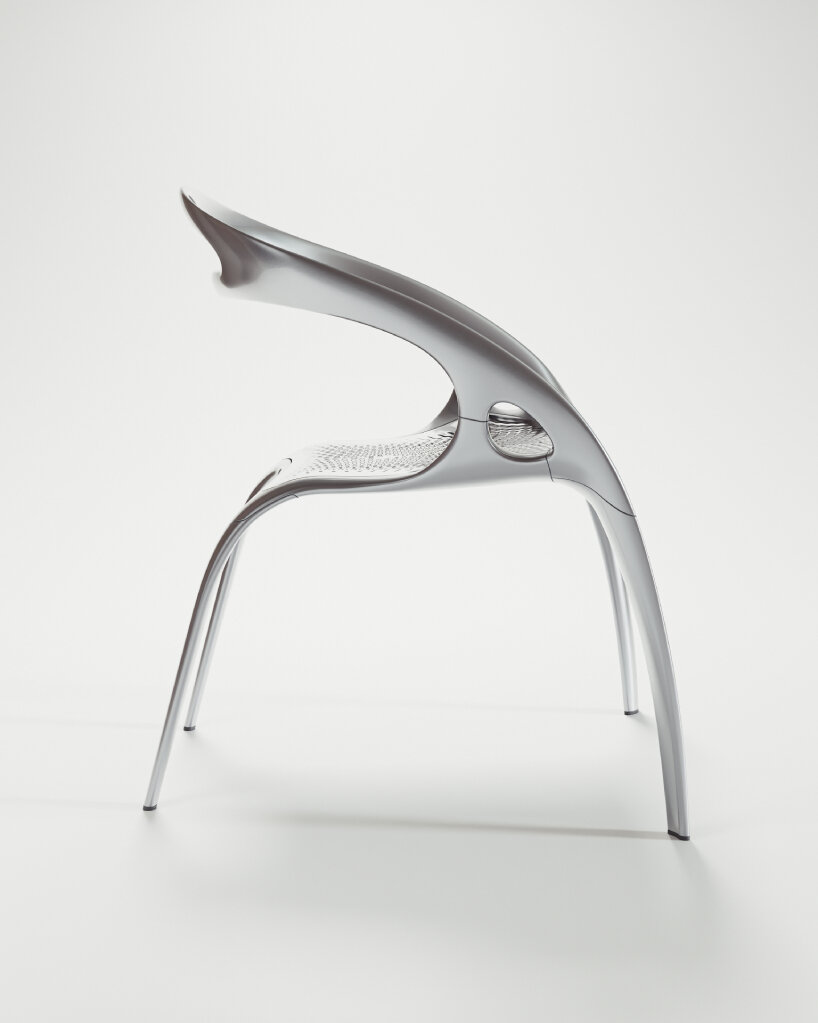
the industrial designer draws directly from the shock wave data of the mission launch
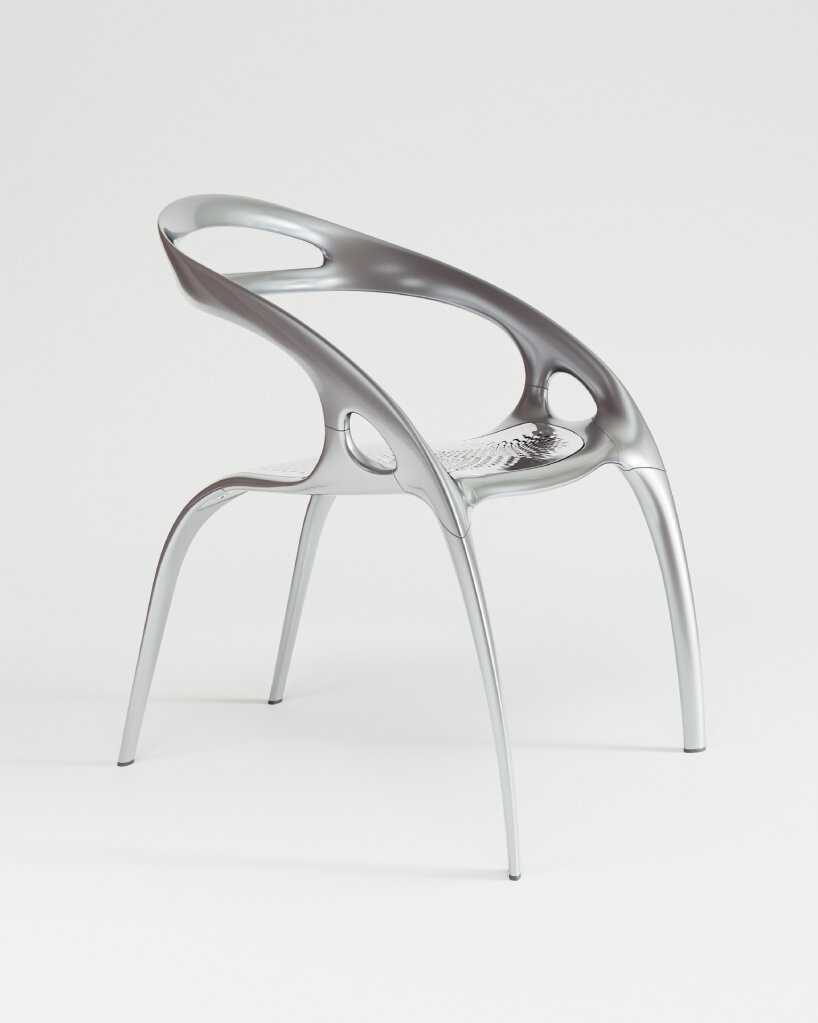
Ross Lovegrove says he has access to the Polaris Dawn flight data and uses it as follow
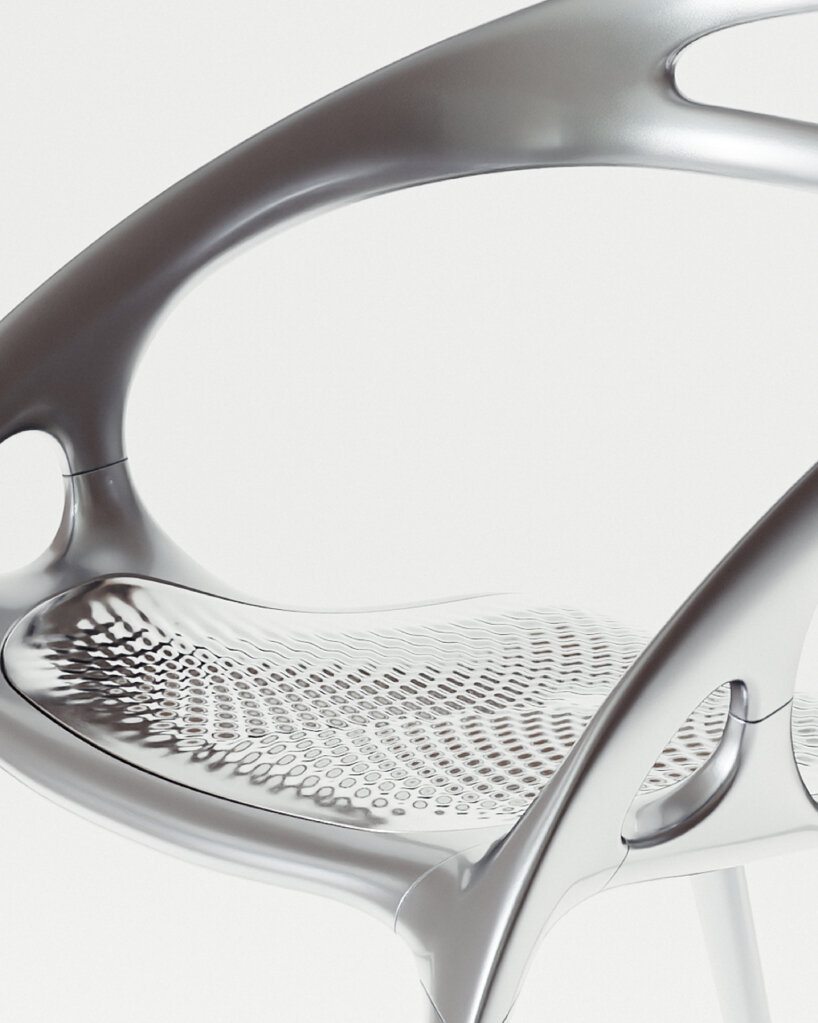
the designer injects magnesium into the aerospace-grade aluminum alloy for the design of the chair
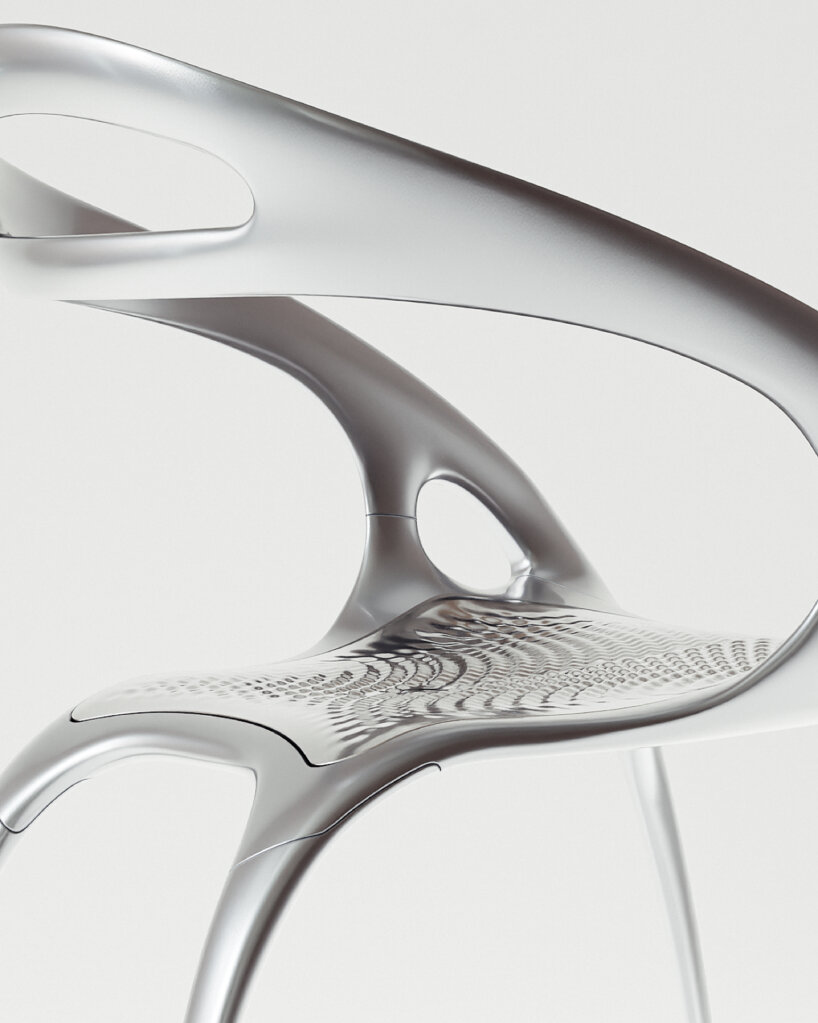
the four-sided ripples that converge in the middle also pay homage to the four astronauts in the space mission

